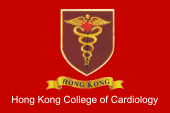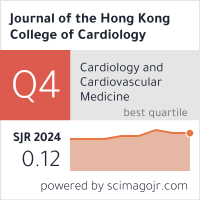Instruction For Authors
General Information
A cover letter, addressing to the Editor-in-Chief, Dr Ngai-Yin Chan, must affirm that the manuscript is not under simultaneous consideration elsewhere and it has not been previously published in a similar form. No part of a paper, published by JHKCC, may be reproduced or published elsewhere without the prior written permission of the author(s) and the publisher. The author(s) is(are) responsible for the entire manuscript. JHKCC disclaims all responsibility for such material. No product or service advertised in this publication is guaranteed or warranted by the Editors of publisher. Neither the Editors nor publisher guarantee any claims made by a manufacturer or author in regard to a product or service. If a trademark item is named, the name(s) and address(es) of the manufacturer(s) or supplier(s), in addition to the generic name, should be foot-noted.
In addition, an Author Declaration Form has to be submitted and it can be downloaded here: Author Declaration Form
Publication Ethics
Studies should comply with the Declaration of Helsinki. For human studies, a statement in the manuscript should be included declaring that the study obtained ethics approval with the name of the ethics committee or institutional review board documented. It should also be stated that either the subjects gave informed consent before participation or the requirement for informed consent was waived by an ethics committee or institutional review board.
Prospective human clinical trials must have been pre-registered in a clinical trial database. For these articles, the registration number and the name of the database should be included.
For studies involving animals, a statement should be included declaring that the study obtained ethics approval with the name of the relevant ethics committee or institutional review board documented.
Conflict of Interest
All authors must declare any conflict of interest. When submitting a manuscript via the online submission system (Editorial Manager), you will be asked whether you have any conflict of interest. As the submitting author, it is your responsibility to ascertain any conflict of interest from your co-authors and to highlight that accordingly. If you are unable to declare conflict of interest on behalf of your co-authors, all contributing authors will need to complete and upload Conflict of Interest Forms to the journal submission site.
In addition, all authors must submit a statement of Conflict of Interest to be published at the end of their manuscript before the section of References. If there is no Conflict of Interest to be declared, this will be stated in the manuscript using the following wording: “Conflict of interest: none declared”.
The Conflict of Interest Forms can be downloaded here: COI Disclosure Form.
Transfer of Copyright
In consideration of the action of the JHKCC in reviewing and editing a manuscript submitted for publication, and in the event such work is accepted for publication by the JHKCC, the author(s) will transfer, assign or otherwise convey all copyright ownership to the HKCC, including but not limited to the right to transfer, assign, publish, reproduce, distribute and/or adapt all or part of the manuscript, through HKCC or any other parties authorized by HKCC.
Submission of Manuscripts
JHKCC operates a web-based system (Editorial Manager) for manuscript submission and peer-review process. For submission, please go to the online submission system via the JHKCC website and follow the instructions given on screen. First-time users must register and enter the required information. The system will then send you an automatic email with your user name and password. Detailed guidelines are available at the Editorial Manager site by clicking “Help” or viewing the author tutorial.
You will be asked to supply information about your manuscript and then attach your files containing the text of the manuscript and any figures and tables. Editorial Manager will create a PDF file from your submitted data, which is the format in which the manuscript will be made available to the editors and reviewers during the peer-review process.
Manuscripts should be submitted as Microsoft Word documents. Tables and figures are preferably prepared and submitted in separate files. They may be included in the manuscript file, but must appear at the end of the text on separate sheets without embedding in the text. Electronically submitted figures should be in high resolution and in one of the following formats: tiff, bitmap (.bmp), jpeg (.jpg), portable data format (.pdf), postscript (.ps or .eps) or as PowerPoint or Excel files. Should the manuscript be accepted, the original photographs may be required for use in the production process. Tables may be submitted as Word tables, or in .rtf format.
You will be required to enter the Abstract and Keywords during the submission process. These may be copied and pasted from the manuscript document, but must still appear in the manuscript itself. You may suggest names and email addresses of reviewers in the “Enter Comments” section of your electronic submission. When completing the “Add Authors” section, please enter the names and countries of all the authors listed in the manuscript.
Articles Categories
- Original articles Original articles refer to clinical investigations based on either normal subjects or patients, or experimental studies involving animals. Articles are usually limited to 3,500 words (excluding references, tables and figures), up to 4 figures and 4 tables (or a combined total of tables and figures that is not greater than 8) and 20 references.
- Reviews JHKCC publishes scholarly and comprehensive reviews with the aims of summarizing and evaluating critically research in the field addressed and identifying future implications. Reviews are usually by invitation. However, unsolicited submissions may be considered. Reviews should not exceed 5,000 words, 5 figures, 5 tables and 150 references.
- Case reports JHKCC publishes case reports presenting the diagnosis, treatment and follow-up of a patient with an unusual or unique aspect. Preliminary information on a technique or idea that is likely to find widespread application is preferred. Case report should not exceed 1,000 words structured under the headings of “Introduction”, “Case report” and “Discussion”. An unstructured abstract not exceeding 100 words is required. A maximum of up to 3 figures is allowed.
- Editorials Editorials provides comment, context and critique of articles published in JHKCC. Papers in this section can also be written to provide focused coverage of topical issues in cardiovascular medicine and related disciplines which are of high current interests and potentials. All editorials should be limited to 1,500 words and 10 references, which must include a reference to the original article where applicable. Editorials should be by invitation.
- Letters to the Editor Letters to the Editor should not exceed 500 words and should focus on a specific article published in the JHKCC within the preceding 12 weeks. No original data may be included. The number of references is limited to a maximum of 5. Authors will receive pre-publication proofs and the authors of the article cited will be invited to reply.



